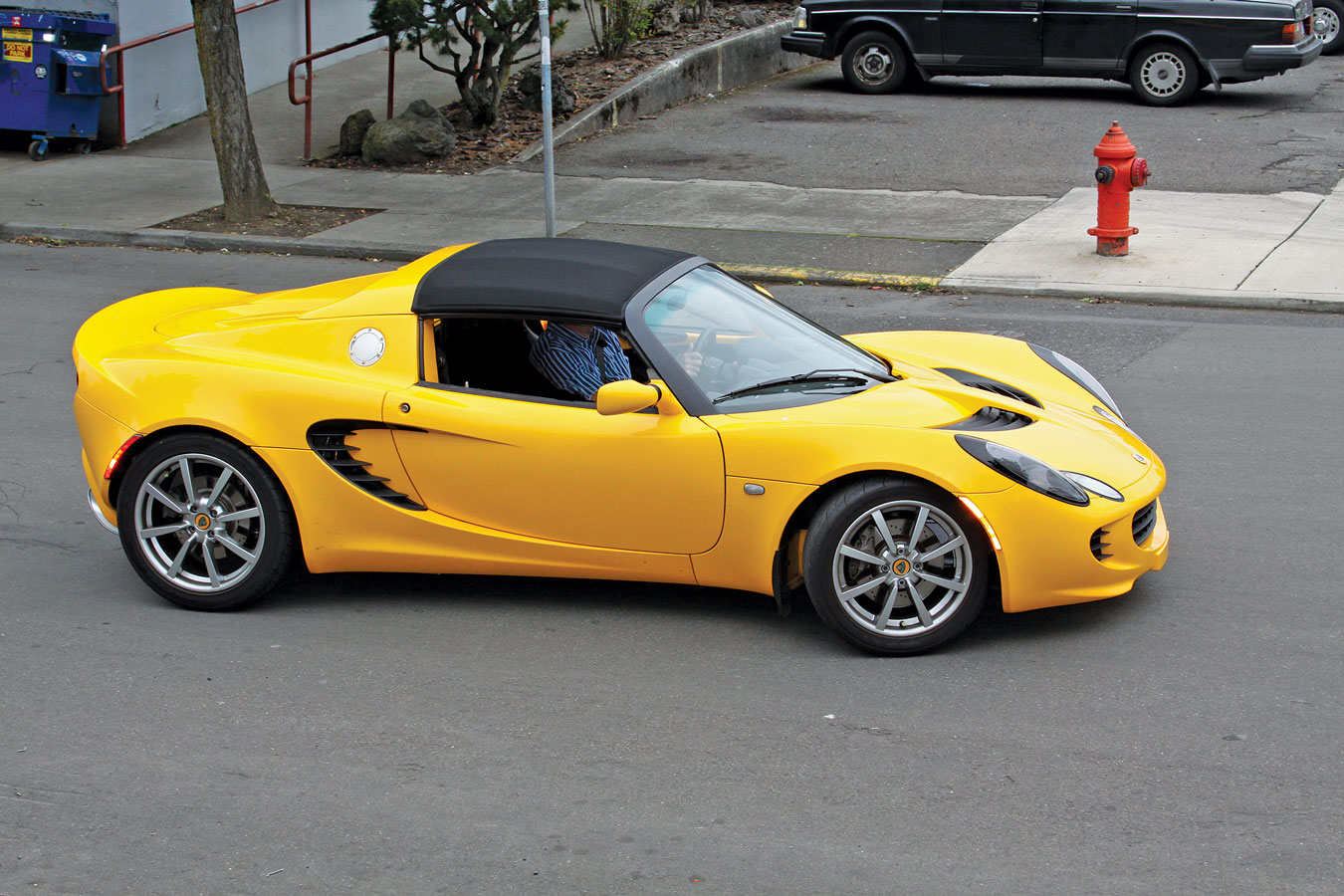
If you’ve ever discussed cars with a Lotus owner, you’ve probably heard the phrase, “What you have to understand is...” That’s just the nature of a Lotus. There are always going to be the parts that fail, the welds that crack, and sometimes the door handles that come off in your hand. (Honestly. It happened to me.)
But what you have to understand is that the driving experience of a Lotus makes all that trivial stuff worthwhile. We’ve written about the joys of driving a vintage Lotus before, and the performance of Lotus’ newer generation of cars is measurably better than any older model. That’s the fundamental reason why we think the Lotus Elise (along with its hard-top Exige stablemate) is destined for classic status.
Proud pedigree
The Elise was first developed in the mid-1990s as a successor to the second-generation M100 Lotus Elan, and it’s a spiritual descendant of the original Elan of the 1960s. However, where the M100 was a Lotus experiment with front-wheel drive, the company came to its senses and conceived the Elise as a mid-engine, rear-drive sports car.
The first-series Elise came out in 1996 and followed Lotus founder Colin Chapman’s dictum to “simplify, then add lightness.” The little roadster weighed in at just 1,598 pounds. That was a result of its light fiberglass bodywork hung on an aluminum frame. A 1.8-liter Rover engine provided 118 horsepower in base models.
After 2000, the original car could not meet European crash-safety standards, so Lotus created the Series 2 Elise with improvements across the board and a more-aggressive aesthetic. The S2 looks much more finished, thanks to computer-aided design and an infusion of cash from General Motors. It copied the car under license, producing the not-for-U.S.-sale Opel Speedster and Vauxhall VX220, which seemingly ascribed to another philosophy: “Complicate, then add butt-ugly.”

aftermarket supercharger kit
A British invader
By 2004, Lotus was ready to bring the Elise to the U.S. as a 2005 model, but it had to get a safety exemption from the Department of Transportation (DOT). The National Highway Traffic Safety Administration (NHTSA) found that the Elise did not meet federal bumper and headlight regulations but provided a three-year waiver so the cars could be sold here. Lotus also ditched the Rover engine for a smog-friendly Toyota 190-hp 1.8-liter unit and 6-speed manual transaxle, thereby improving reliability.
When the first waiver ran out after 2007, the U.S.-spec Elise was updated with a few concessions for the American buyer, including power windows, anti-lock brakes, new headlights, and some extra structure to meet those 2.5-mph bumper requirements. There was a cost, though, as the federalized Elise “plumped up” to 1,896 pounds. The car could reach 0–60 mph in less than five seconds, however.
From 2008, Lotus also made the Elise SC, outfitted with a Magnusson supercharger. With 218 hp, the SC did 0–60 mph in just 4.3 seconds. It was offered through the end of U.S. sales, along with a number of limited-production special editions.
The final year for the American Elise was 2011, which was also the first year of the lightly refreshed S3 version. Toyota had stopped making the 2ZZ-GE engine and Lotus’ final NHTSA waiver on the Elise, for the lack of smart airbags in the passenger’s seat, expired in August of that year. The larger Evora became the only new Lotus available to U.S. buyers.

Totally hot, totally crazy
Elise owners seem to revel in the challenges that their cars present. A sampling of one online forum yields gems such as, “It’s like a supermodel with a personality disorder.” But in the very next breath, “The Elise is one of the best-handling vehicles in the world. You cannot lose control of this thing, and the Toyota engine makes a glorious noise.”
Buyers who aspire to an Elise may end up feeling like a Marvel superhero, because this isn’t a car you get into like a Miata or Mustang; it’s a mechanical suit that you put on to do great things. Yes, it’s that snug. If you want to have a bit more room and comfort, consider the Evora.
The saving grace of the Elise is that it’s a roadster, so you can wriggle out of it with a little more grace than its fixed-roof Exige counterpart. Just don’t use the Elise’s windshield to pull yourself up, because your weight can bend the frame.
And for the love of all things holy, don’t hit anything with it. The fiberglass body parts are hard (read: expensive) to replace. To that end, many Elises have been used as Chapman would have intended, were he still alive. Be wary of previous crash repairs and general abuse in any Elise you look at, no matter the mileage. Electrical faults can also be frustrating, but often minor.
Buying an Elise
The market for the Elise S2 has been remarkably stable. In 2021–22, the vast majority of Elise sales found buyers between $40,000 and $60,000 for high-quality, low-miles examples.
The thing about the Elise market is that prices aren’t high because of scarcity. Lotus sold 6,325 examples (including 279 SC models) in the U.S. alone. Bring a Trailer sees a half-dozen Elises cross the block every month, on average. The prices are solid because people want these cars. The interesting thing is that there are almost no outliers on price. Nothing really changes the calculus: whether it’s a super-low-miles SC or just a plain Elise, you can expect to spend $50,000, plus or minus a few thousand.
The good news is, any Elise you buy is unlikely to be worth less than you paid at any time in the future. It’s equally unlikely we’ll ever see a new road-legal car built like the Elise again. ♦
Nice as well as well informative article